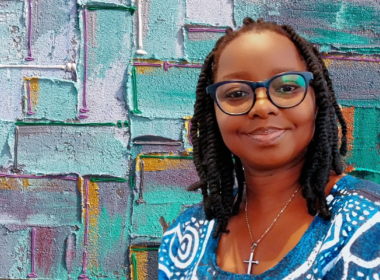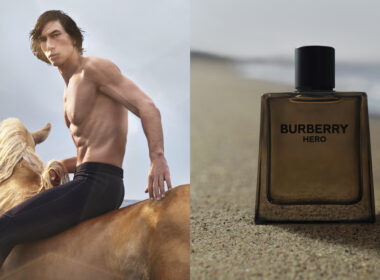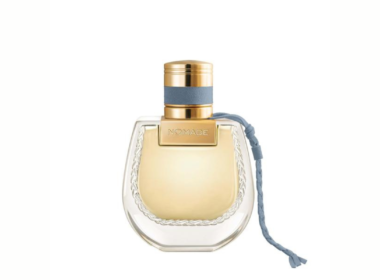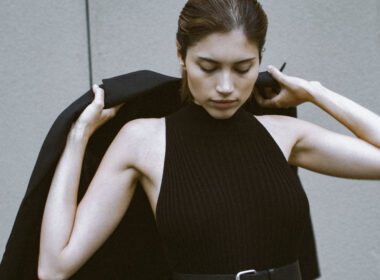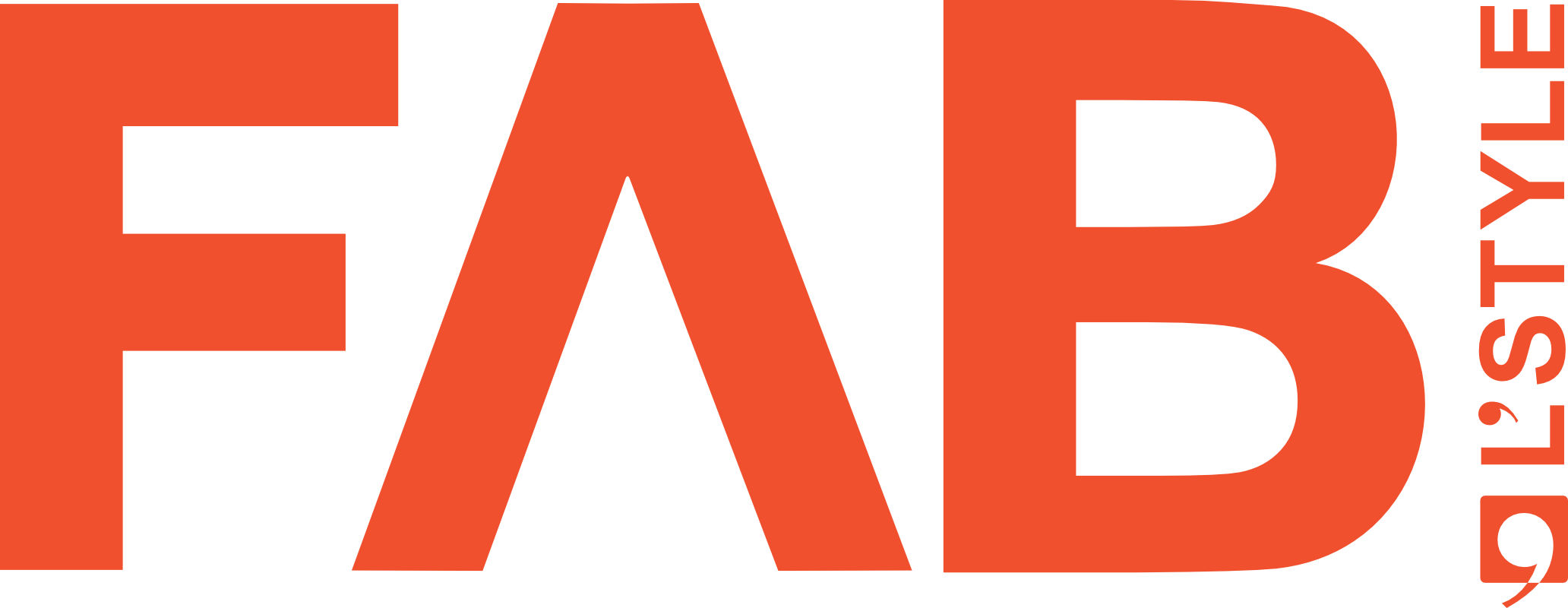A self-taught multidisciplinary artist, Selassie’s work is deeply rooted in personal experiences, African spirituality, and the contrasting terrains of Ghana and Europe. Known for his signature stick figures, bold colour palettes, and thought-provoking installations, he explores themes of identity, heritage, and self-expression. In this exclusive interview with FAB L’Style, Selassie opens up about the profound influence of colour on his creative process, his journey from dance to visual art, and how he balances personal expression with high-profile collaborations with brands like Nike and MCM. Through his storytelling and artistic evolution, Selassie offers a compelling glimpse into the intersection of art, culture, and personal transformation.
Selassie’s Thoughts on Art, Identity & the Power of Storytelling

FAB: Selassie, your art is known for its vibrant colours and deep emotional significance. Can you elaborate on how your personal experiences influence the colours and themes in your work?
Selassie: I used to have this habit of dividing each day into a colour because I grew up deeply connected to African spirituality. Looking back, a lot of it revolves around frequencies, colours, and sounds. I also grew up in Ghana, where these elements were a part of my daily life. When you move to Europe, you notice a difference. The architecture, the way buildings are painted, the overall atmosphere—everything feels more minimalist, more subdued, and quieter.
In Africa, on the other hand, life is louder, more vibrant, and more colourful. There’s a natural rhythm to everything—the way people move, the way they dance, the way the streets come alive. For me, these colours are deeply rooted in my experiences—walking through Accra, seeing the food stands and market stalls painted in bold blues and yellows, the tro-tros with their bright, eclectic designs. African textiles, like batik and kente, are also filled with rich colours and patterns.
In a way, these colours serve as memory markers for me—a way to stay connected to where I come from. And beyond that, they’re my way of bringing light into dark days, both for myself and for others. That’s why I started associating each day with a colour, assigning it a meaning or affirmation. For example, Monday was red, so I’d focus on things that were red. Tuesday was orange, and I’d surround myself with orange tones. I even extended this to food, eating according to the colour of the day. It became a kind of personal ritual, a way to ground myself and bring intentionality into my daily life.
Recommended For You
FAB: You’ve described an intriguing way of thinking—thinking in purple, speaking in blue, and feeling in green. How does this unique approach shape your creative process?
Selassie: Yes, exactly. In terms of words of affirmation and a spiritual approach, orange is often associated with creativity—it symbolises action and creation. But I also believe that not every day feels the same. Sometimes, you wake up feeling disconnected from your mind and body. I think the first thought you have in the morning sets the tone for the entire day. That’s why I shaped my mindset in this way—because of my experiences. My mother battled cancer for seven years before she passed away when I was still a child in Germany. After that, I had to find a way to stay grounded and true to myself. I had to learn my own techniques, almost intuitively, to make sure I didn’t lose my way.
Moving from Ghana to Germany, it’s easy to get caught up in making money rather than pursuing your true purpose. There’s always that sense of responsibility—to give back to your community and support your family. It’s tough to stay focused on your purpose when so many people rely on you. But these creative practices—music, painting, and the digital world—helped me stay connected to what I truly love.
FAB: As a self-taught multidisciplinary artist, what were some of the challenges you faced early in your artistic journey?
Selassie: Yes, you realise that if you had studied formally, securing funding might have been easier. But you also learn a certain form of freedom in how you work on poetry. You don’t have anybody to listen to. One of the biggest challenges is staying curious—never assuming that what you’re doing is already “right.” I don’t necessarily see myself as a great painter; I just know that I love painting. Some people tell me I should compliment myself more for the art that I do, but I prefer to stay in a mindset of curiosity rather than comfort. That balance between embracing challenges and recognising blessings is something I’m still figuring out. I don’t know if I’ve found the right balance yet, but I’m enjoying the process.
One major challenge is continuing to develop my craft without the structure of a formal art education. In a university setting, you have access to studios, resources, and materials. Without that, you have to find ways to fund and sustain your own practice. Art can be expensive, and it requires a deep love to keep going despite the obstacles. In the end, I see it as both a challenge and proof that I’ve found my own “safe waters.”
The Meaning Behind Selassie’s Signature Stick Figures

FAB: Your work often features stick figures with no fixed identity. What inspired you to use these figures as a recurring motive in your art?
Selassie: I’m not sure—it just happened naturally. I came from a background in dance, and many of my friends were making music at the time. I danced for about ten years, and I found that dance, especially in a battle setting, felt like a strategic game, almost like chess. When you’re on the dance floor, it’s about reading your opponent—observing their strengths, their hesitations, and how they carry themselves. You can tell if someone is very confident with themselves or is nervous at the moment on a dance floor when it’s just you and the person in the middle. And I felt like it was a very natural way for me to communicate body movement, and also, like, coming from an African descendant, there’s this hieroglyphic practice. I was very inspired by Basquiat and Keith Haring at that time also. That’s how I started painting—not by focusing on creating perfect human figures, but by capturing movement, energy, and rhythm. It felt like a natural transition from dance to visual art, allowing me to tell stories without words.
FAB: You’ve exhibited your work internationally and collaborated with major brands. How do you balance commercial projects with personal artistic expression?
Selassie: I’m working with a company called EIA—Emotional Intelligence Agency. It’s a creative platform and label that encompasses multiple elements: a clothing brand, jewellery, a magazine, and even a concept around food and residential living. For me, I’ve been able to separate my personal creative journey from the platform. When I collaborate with brands, I use what I earn to continue building the platform, allowing it to grow independently. In that way, I see Selassie and EIA as two different projects. So the stick figures that you were talking about became more like a logo-type thing for collaborations now. And Selassie continues going and figuring out stuff without forcing himself to be part of the brand world.
FAB: So when you collaborate with brands like Nike and MCM, how do you approach merging your vision with the brand’s identity in those collaborations?
Selassie: At the end, you want to decorate a space or the ear or the eyes. I feel like everybody is doing the right thing. You just have to bring your value, your taste, and your culture to it without taking away what they are. It’s good to be in a space where you can learn more than being someone that knows too much. And I feel like I’m very good at seeing things like with MCM; you can see the monogram and the details. It can feel techie, but it’s not techie at all because of the way they place it. And when I collaborated with them, I just took away all their logos, but I kept the idea of monograms with the statement. So it became like a takeover, but also not a takeover. It became like an empty canvas where MCM could have had their logo statement, and it would still be MCM. Or like literally just not trying to take away what they are, but rather adding on to what you feel is missing in your terms of value or culture.
FAB: And you’ve mentioned idols like Basquiat and Virgil Abloh. How have these figures shaped your artistic perspective?
Selassie: Yeah, back when I was living in Frankfurt, I was dancing and thinking about going into investment banking—stock trading. Somehow, I ended up in the diamond trade for a while. During that time, I met one of my mentors, who had this habit of visiting the museum every Sunday. Never miss a beat in fashion, arts, beauty, and lifestyle, follow FAB L’Style Magazine.
He initially booked me for a motor show, but he also started taking me to the museum with him every week. One day, I saw a painting by Basquiat alongside a Francis Bacon piece. I don’t remember the name of the painting—I’m terrible at remembering names. Honestly, I don’t even care about the names; it’s the visuals that stick with me. What struck me was this deep blue that Basquiat used. It still looked wet, like it had just been painted. I was fascinated by how a colour could hold so much life for so long.
That moment changed me—it made me think about how stories can live on, how art allows you to tell your own story in your own way, without being confined by the world’s expectations. Or sometimes, just to add to the world’s conversation. I feel like Virgil did that beautifully. And Basquiat, too—in his own way, through all the pain and love he experienced. I think a lot of us can relate to that feeling of being away from home, missing something familiar, and navigating how we’re perceived in new places. It’s about learning to communicate those emotions in a way that’s true to you. In a full-circle moment, my first group exhibition actually featured a Basquiat painting and a piece by Virgil Arnold.
FAB: What role does collaboration play in your art, especially with other artists and creators?
Selassie: When it comes to painting, I’m honestly mad egoistic. It’s my own world, my safest space—kind of like having my own camera where I control the perspective. When it comes to brands and collaborations, though, I keep an open mind. I’m always willing to learn. When it comes to music, it can never be done alone. It’s very egotistic to do music alone. I think I’ve found a way to balance these different artistic forms without losing the essence of working with others or the solitude that some mediums require.
Performance pieces, for example, need a team—you can’t pull them off alone. Music, too, is collaborative; you can produce a beat with others, featuring different voices. But painting? That’s deeply personal. The only people I paint with are my girlfriend and my daughter. Beyond that, it’s tough for me. That said, I love creating space for others to paint—I just don’t want to share the same level of commitment in that process.

FAB: You’ve held solo exhibitions in places like the VRB Gallery in Berlin, the Gallery Monaco, and Rupert in Frankfurt. How do you prepare for exhibitions, and what’s the message you aim to communicate?
Selassie: Preparation is always ongoing in some way. I don’t chase exhibitions—I chase spaces. I’m always interested in how a space can be transformed and how it looks with different elements and ideas.
With VRB Gallery and Monaco Rupert, as a young artist, you navigate various spaces—underground, raw, brutalist, and contemporary. At some point, you also want to see how your art looks in the clean space. I build a lot of my installations using old wood, and part of the process is figuring out how it fits within each space. I feel like at the end of an exhibition, I want to communicate where I am right now in life and what I’m trying to learn. And this exhibition brought me to the point of feeling like where I am right now. Mostly that’s what I’m trying to communicate. One of the key things I want to express is that young Black men experience their own forms of depression. But rather than just stating it, I aim to communicate it in a way that feels soft, that invites listening and understanding.
FAB: Your performance piece Evolve or Repeat seems to explore quite deep themes. Can you discuss the concept behind it and what you hope to convey?
Selassie: The installation you see in the video is of a house. My first real solo experience as an artist was in Munich, right after COVID. It was actually just outside Munich, in Guttental, where I met the mayor at an ice cream shop. We ended up chatting like old friends about ice cream, and out of nowhere, he told me he was the mayor and offered me a space. He asked me what I wanted to do with my life, and I told him I wanted to create—build something, do something impactful. He then said, “I have the space. Do you want to take a look?” I went to see it, but the space was essentially empty—no floor, no structure. But it was post-COVID, and I had recently met a taxi driver who had been collecting all the taxi glasses that were discarded during the pandemic.
So I built this transparent house in the space, which was supposed to communicate how we are in Europe in a glass house and looking at things from far away and not listening to the news and the control that the system brings with it. Evolve and Repeat was the name of the installation. It was a reflection of two paths: either you evolve, building respectful roots to nature and the world, or you repeat the cycle of being mentally manipulated by politicians and systems, which breaks you down and keeps you dependent.
In a way, it was also me confronting myself. It was a reminder that if you don’t need outside validation or attention, you can first find yourself within before engaging with the outside world.
FAB: And you’ve curated shows during Berlin Art Week and installed works at Mannheimer Kunstverein. How does the location influence your site-specific installations?
Selassie: The installations are made with the products that are out of space and don’t want to be touched by people. I want to use something that is part of the space and add to it rather than disrupt it. One of my installations, “Question and Comfort,” is built using bricks spaced exactly 75 centimetres apart—the height of a stair. If you double that, 75 times two, you get the standard height of a full stair step. If you were to create a stair with an 81-by-81 measurement, most people would instinctively trust it enough to walk over it. The stones are being used to build buildings and everything. I built a couch entirely out of bricks, and at first glance, it looks uncomfortable. But because of the calculations behind its structure, it actually becomes surprisingly comfortable.
The idea is to show people that these materials don’t have to be discarded—they can be reimagined into something functional within a space. It’s a more sustainable, green way of working. In both my installations and performance pieces, I often explore themes of war and global cultural conflicts. My installations lean toward environmental issues, while my paintings reflect feelings of missing home—keeping Africa close despite the distance. And my music? That’s where my dreams and desires live.
Selassie: The one thing I never planned on doing was painting, but it found its way to me, and now I actually enjoy it. There’s something beautiful about how nervous it makes me—how it scares me. It pushes me to want to say the right things. I love the process of combining sound, visuals, and everything else into one cohesive piece. I’ve always been inspired by Charlie Chaplin, and I’ve dreamed of becoming a film director. But for me, words and music are the real mediums. I’m just starting to explore this direction, learning as I go. One day, I’d love to make a film—a 90-minute piece that tells a story with music at its core, based on life experiences or something deeply personal.
Selassie: I don’t navigate them at all; I feel like they navigate themselves. Sometimes it even depends on the weather. For example, when I’m in Berlin during the cold winter afternoons, I tend to make more music. In contrast, I paint more in other seasons, and I often find myself writing down creative ideas. Right now, I’m focused on EIA. The balance comes from responding to what the world needs from you—paying the bills, managing responsibilities—and also understanding what you want from yourself and what gives you freedom.
For me, growing as an artist is important, but I feel the most freedom when I’m making music. I love the idea of a 19-minute performance piece on stage—it’s something I’m working toward. In a way, it’s like a big university for me, constantly learning as I prepare for that moment. Balance, to me, is found in the learning process. I don’t necessarily know exactly what I’m doing, but I’m good at understanding where I am and accepting that I still have a lot to learn. I just let things happen and approach them with gratitude. There’s a lot going on in the world, and I’m thankful that I can still create, that I haven’t had that taken away from me.
FAB: Looking ahead, are there any particular themes or mediums you’re excited or looking to explore in your upcoming works?
Selassie: I’m really drawn to culture, and architecture is a major part of that for me—it’s about how people live. I’ve already created a framework for a seven-course menu based on colours. I also think a lot about how we can shift the perspective on food in Africa. How can we use more of the local vegetation to produce sustainable, green food in villages? I’m interested in ideas like water pumps, solar systems, and other forms of resilience. I like to approach these ideas through the lens of charity and sustainability.
It’s exciting to think about how buildings can be designed to express something deeper, to make a statement in the real world. That’s part of why I have the EIA project. It’s meant to become a platform that embodies these ideas around the clock. What I love about EIA is that it brings everything I do together, but it’s not about me being the centre of attention. The focus is on EIA itself and what it stands for.
